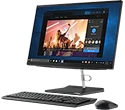Which is best PC or laptop for graphic design?
This is a difficult question to answer as it depends on your specific needs. A desktop PC will likely be more powerful and have more RAM than a laptop, but laptops are more portable and typically have better displays. If you do a lot of traveling and need to take your work with you, then a laptop would be the best choice. If you're mostly working from home or at a fixed location, then a desktop PC would be better. Either way, make sure to get one with a good graphics card for graphic design work. However, in general, a PC might be better for graphic design as they typically have more processing power than laptops. Additionally, PCs usually come with a larger monitor which can be helpful when working on complex projects.
What size laptop is best for graphic design?
It depends on your needs. A 13-inch laptop would be good for basic work, but for more complex projects, you may need something with a larger screen. A laptop with a 15-inch screen is best for graphic design. Laptops with smaller screens may be too small to work on and laptops with larger screens may be too large to carry around. A 15" or 17" laptop tend be a good sizes for using software like Adobe Photoshop and Illustrator. These larger displays give you a good amount of screen real estate. If you're looking for something more portable, then a 13" or 11" model might be a better option. Just keep in mind that the smaller laptops usually have lower-resolution screens, so it is probably best to consider the one with high resolution if you need to do a lot of detailed work.
How much RAM do you need for graphic design?
Just like with any other computer usage, the amount of RAM you need for graphic design depends on what you'll be using it for. If you're only doing essential design work, you can get away with 4GB or even less. However, if you're working with large files or doing more intensive design work, you'll need 8GB or more. The bottom line is that the more RAM you have, the better. However, 4GB is usually enough to get started if you're on a budget. Once you start working with larger files and doing more intensive design work, you can always upgrade to 8GB or more.
Is i5 enough for graphic design?
There's no specific answer when it comes to graphics design and the ideal processor. It depends on a variety of factors, including the type of graphics design you're doing and what other hardware you have. If you're doing simple graphics design work, an i5 processor may be enough. However, if you're doing more complex graphics design work, you may need a more powerful processor like an i7. It also depends on what other hardware you have. If you have a powerful graphics card, your processor may not need to be as powerful. Conversely, if you don't have a very powerful graphics card, your processor will need to be more powerful to compensate.
What laptop specs do I need for graphic design?
It depends on what you're designing. If you're doing basic design work, like creating flyers or simple graphics, you don't need a very powerful laptop. But if you're doing more complex work, like working with 3D models or using heavy photo editing software, then you'll need a more powerful machine.
Here are the specs you'll want to look for in a good laptop for graphic design:
- A high-resolution screen (at least 1920 x 1080)
- A fast processor (i5 or i7 is best)
- Latest Intel or AMD GPU’s
- Lots of RAM (8GB or more)
- A large hard drive (1TB or more)





















